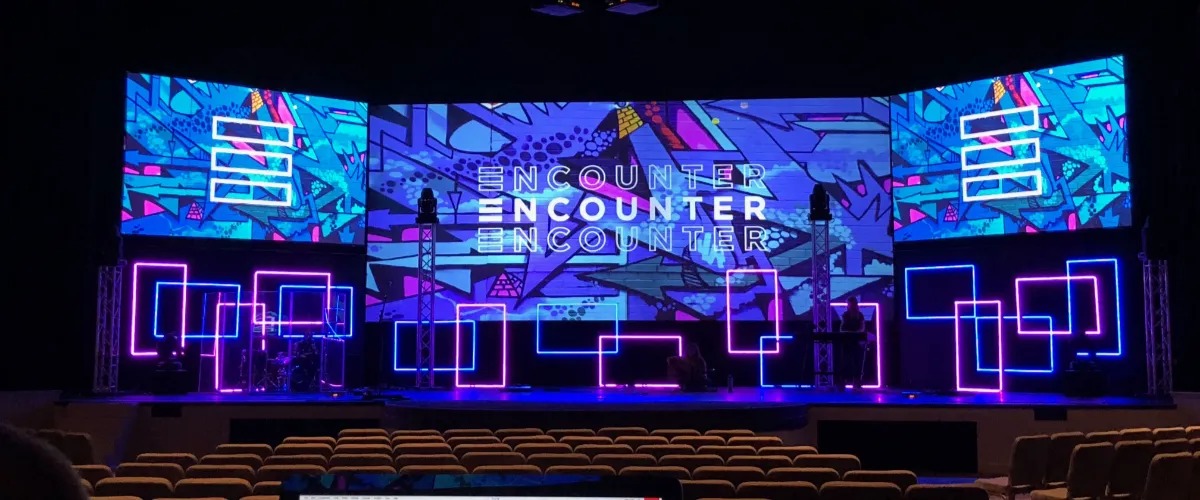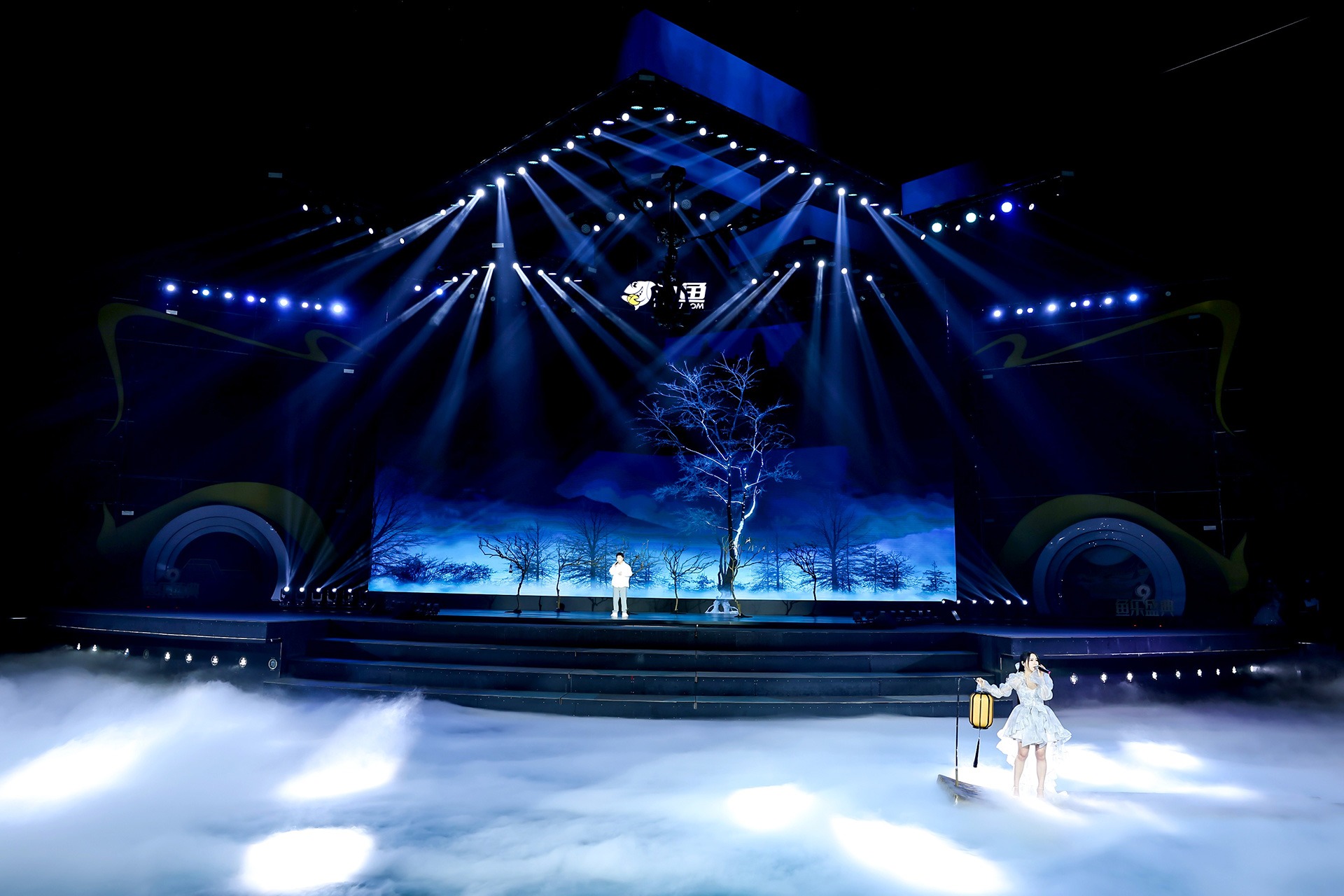
When it comes to stage setup with LED backdrop screen, many people find it challenging and cumbersome. Indeed, there are numerous details to consider, and overlooking them can lead to complications. This article addresses key points to keep in mind across three areas: stage setup plans, LED backdrop screen usage pitfalls, and on-site setup details.
1. Plan A: Stage + LED Backdrop Screen
For an LED backdrop screen, the stage must support adequate weight and be solid and stable to ensure safety. A steel structure stage is recommended for its safety, durability, and stability. With a backdrop LED video wall, you can switch visuals or play videos and other materials as needed, making the stage background more dynamic and colorful.

2. Plan B: Stage + LED Screen Backdrop + Decorative Curtains
The use of an LED backdrop screen, such as RTLED’s big LED screen, allows for flexible image switching, video playback, and material display, enhancing the LED screen stage backdrop’s vibrancy. Thematic visuals, videos, presentations, live broadcasts, interactive videos, and show content can be displayed as needed. Decorative curtains on either side can play relevant materials for each event performance and segment, enhancing the atmosphere and adding visual impact.

3. Plan C: Stage + T-shaped Stage + Round Stage + LED Backdrop Screen + Decorative Curtains
Adding T-shaped and round stages increases depth and dimension to the stage, bringing the performance closer to the audience for more interaction and facilitating fashion show-style performances. The LED background screen can switch visuals and play videos or other materials as needed, enriching the content of the stage background. For each segment of an annual event, relevant materials can be displayed to keep the audience engaged and add visual appeal.

4. LED Backdrop Screen Important Considerations
From the traditional single large central screen with side screens, stage LED backdrop screens have evolved into panoramic and immersive video walls. LED screen stage backdrops, once exclusive to large-scale media events, now appear at many private events. However, advanced technology doesn’t always mean greater efficiency or a higher level of performance on stage. Here are some key considerations:
A. Focusing on the Big Picture While Ignoring Details
Many large events, which often require live broadcast coverage, need not only a strong on-site performance but also to account for the unique demands of televised broadcast. In traditional stage design, TV camera operators could select a low-brightness or contrasting-color background to create unique visual effects. However, with widespread use of LED screen backdrops, failure to consider television angles in the initial design can result in flat, overlapping images that compromise broadcast quality.
B. Overuse of Real-Scene Images, Leading to a Clash Between Visual Artistry and Program Content
With advancing LED backdrop screen technology, production teams and organizers often focus on the “HD” quality of the screen. This can lead to a “missing the forest for the trees” effect. For example, during performances, production teams may play cityscapes or human-interest scenes on the video wall to blend art and reality, but this can create a chaotic visual effect, overwhelming the audience and detracting from the intended impact of the LED screen stage backdrop.
C. Overuse of LED Backdrop Screens Disrupting Stage Lighting Effects
The reduced cost of LED backdrop screens has led some creators to overuse the “panoramic video” concept. Excessive LED screen usage can lead to significant light pollution, hampering the overall lighting effect on stage. In traditional stage design, lighting alone could create unique spatial effects, but with the LED stage backdrop screen now taking up much of this role, creators must use it strategically to avoid diminishing the intended visual impact.

5. Six Tips for Setting Up LED Screen Stage Backdrop by RTLED
Team Coordination: Divide tasks among team members to ensure quick and efficient setup of the LED backdrop screen.
Detail Handling and Cleaning: Allocate personnel to clean and manage finishing details towards the end of the setup.
Outdoor Event Preparation: For outdoor events, prepare for weather changes with adequate manpower, secure the LED stage backdrop screen, and stabilize the ground.
Crowd Control: With many attendees, assign staff to guide people away from restricted areas to prevent crowding and accidents.
Careful Cargo Handling: At high-end venues, handle equipment with care to avoid damage to floors, walls, or corners.
Size and Route Planning: Measure hotel height limits and transportation routes in advance to avoid situations where the stage LED backdrop screen cannot be brought in due to size.
6. Conclusion
This article has thoroughly discussed how to set up a stage with an LED backdrop screen, highlighting important considerations and tips. If you’re looking for a high-quality LED backdrop screen, contact us today!
Post time: Oct-16-2024




